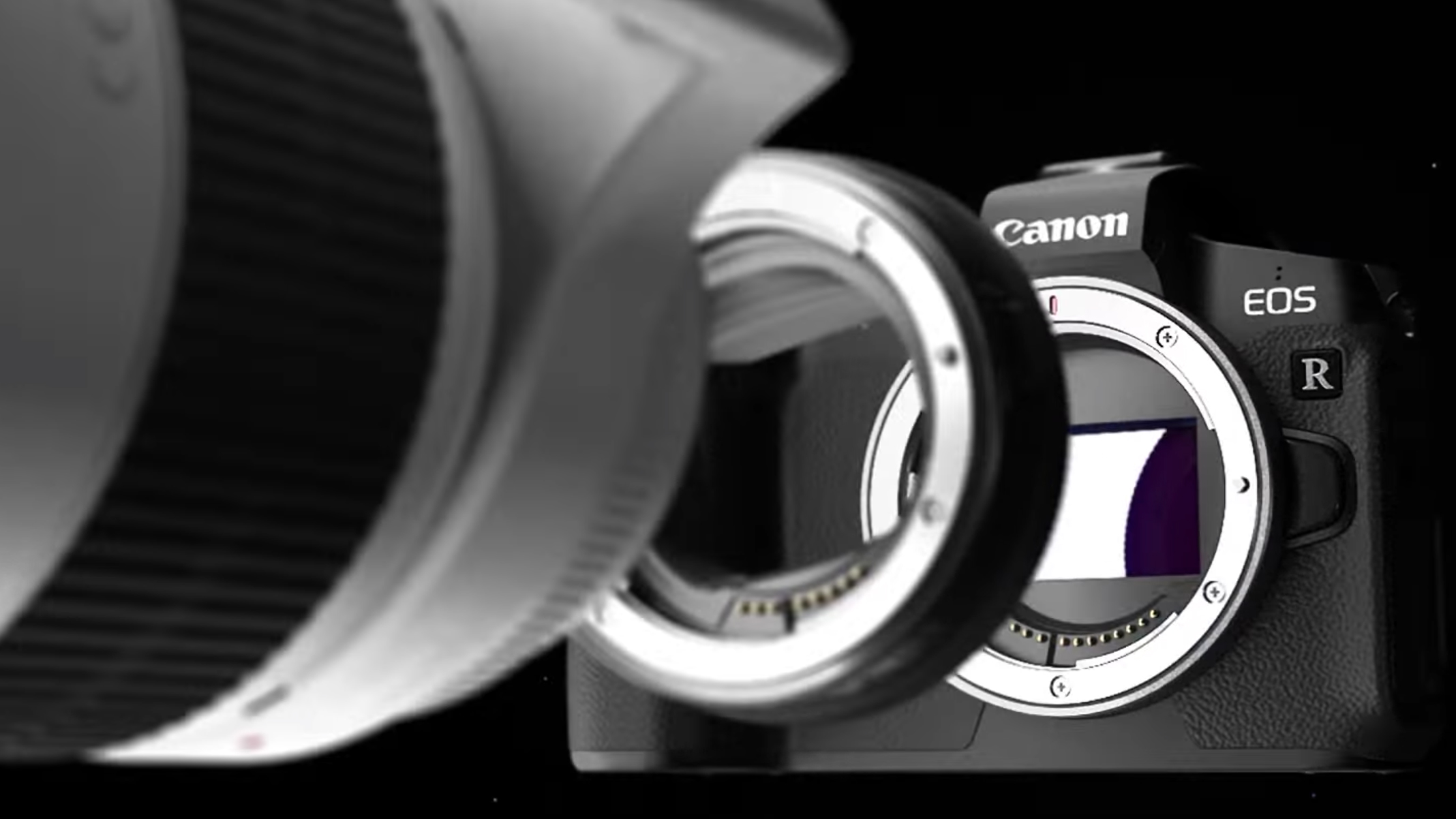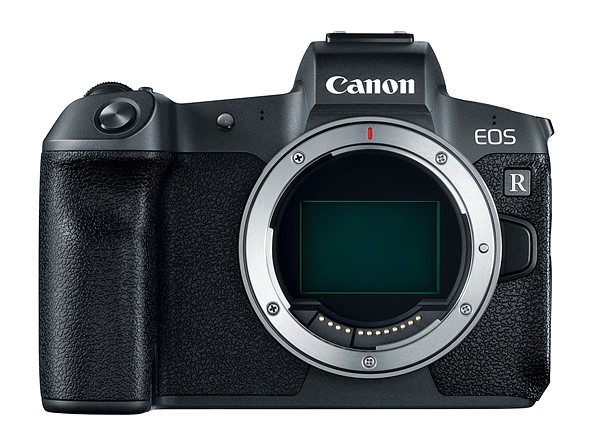Canon unveils new full-frame mirrorless camera, the EOS R
Canon's full-frame mirrorless marvel is finally here

Canon has finally confirmed its much-rumored new EOS R mirrorless system, with the launch of a new full-frame camera.
The EOS R is the first model in the new range, and one that appears to challenge the the likes of the Sony A7 III and Nikon’s recently announced Z6 and Z7 cameras.
The new camera has been crafted around a 30.3MP full-frame sensor equipped with an optical low-pass filter. This sensor has been designed with the familiar Dual Pixel CMOS AF technology that provides phase-detect autofocus, but unlike rival systems that typically offer a few hundred points, the system here offers a significantly higher 5,655 addressable points.
Canon also promises that this is the world's fastest autofocus system, with speeds as low as 0.05sec, and this is no doubt made possible in part by the inclusion of a DIGIC 8 processor.
- Read our hands on Canon EOS R review
New RF mount and lenses
The weather-resistant EOS R also sports a new 12-pin RF lens mount, which has a diameter of 54mm. This works with a new line of optics, four of which have already been announced.
The first is the RF 24-105mm f/4L IS USM, which has the advantage of a constant maximum f/4 aperture and image stabilization. This is joined by another zoom, the RF 28-70mm f/2L USM, the main draw of which is an even wider constant maximum aperture of f/2. These are accompanied by two prime lenses, the RF 50mm f/1.2L USM (below) and RF 35mm f/1.8 IS STM Macro.

While news of a new mount may not be what existing Canon users were hoping for, Canon has assured them that they will be able to continue using EF and EF-S lenses through a new EF-EOS R adapter, with full compatibility, although this won't support EF-M lenses.
Get daily insight, inspiration and deals in your inbox
Sign up for breaking news, reviews, opinion, top tech deals, and more.
The 30.3MP sensor works across an ISO range of ISO 100 to 40,000, and this can be extended to settings equivalent to ISO50 and ISO102,400. Canon’s C-Raw file option, which we first saw on the EOS M50, has also made the cut, providing users with a more efficient alternative to the standard Raw file. Canon states that files saved using the format measure around 17.3MB on average, as opposed to the 31.3MB size of standard Raw files.

The company has also equipped the EOS R with a 3.15-inch Clear View II LCD screen, which boasts 2.1 million dots and the same kind of vari-angle design as the panels found on the likes of the EOS 6D Mark II and EOS M50. With this, the user is not only free to tilt the screen to a range of positions when shooting conventionally, but can also twist it to face the front for selfies, group shots and for vlogging.
Just above this display is an electronic viewfinder, which features an OLED panel with 3.69 million dots, and to its side on the top plate lies a small display that shows key shooting information, much like those on Fujifilm’s X-H1 and Nikon’s Z-series models.
Just beneath this on the back plate is a control we’ve not seen before, which Canon calls the M-Fn Bar. This responds to touches and swipes, and can be used to adjust settings of the user's choosing, such as ISO and white balance.
4K video and Dual Pixel RAW
The EOS R also becomes Canon’s latest model to be capable of 4K UHD video recording, at frame rates of 30fps, 25fps and 24fps. Full HD video can be captured at a maximum 120fps for slow-motion output.
Other features include 8fps burst shooting, which drops to 5fps with continuous focus enabled, as well as the same Dual Pixel RAW option that we first saw on the EOS 5D Mark IV. Among other things, this allows the user to adjust the point of best sharpness in an image post capture using the company’s DPP software. Canon's Digital Lens Optimizer feature has also made the cut.
The EOS R accepts SDHC and SDXC cards, with support for the UHS-II standard, but only through a single card slot. Wi-Fi and Bluetooth are also on board, which allows the EOS R to be controlled remotely from a smart device, in addition to wireless image transfer.
The LP-E6N battery, meanwhile, can be charged in the camera through the USB port at its side. Battery life itself ranges from around 350 frames when using the EVF to 370 frames with the LCD screen, although these figures can be boosted with the camera's Power Saving and Eco modes.
Canon’s existing EOS M system has spawned eight models since its 2012 launch, but these have all featured APS-C sensors. Calls for full-frame models have intensified in recent years, particularly with Sony’s growing dominance among enthusiast and professional users.
The EOS R comes less than two weeks after Nikon launched its new mirrorless Z system with the Z6 and Z7. Panasonic is also rumored to be launching a rival model with a full-frame sensor.
Canon EOS R price and release date
The EOS R is available to pre-order from September 12 and will go on sale from October 9 onwards.
In the UK, the camera will cost £2,349.99 for the body and mount adapter, while a kit with the mount adapter and RF 24-105mm f/4L IS USM lens will be priced at £3,269.99. In the US, the EOS R will be available in its own for $2299 and $3399 with the RF 24-105mm f/4L IS USM lens. Middle East pricing is expected to be Euro 2,499 for the body and Euro 3,499 with 24-105 lens kit.
The RF 50mm f/1.2L USM lens will arrive at £2,349.99 while the RF 24-105mm f/4L IS USM will come with a £1,119.99 price tag. The RF 28-70mm f/2L USM and RF 35mm f/1.8 MACRO IS STM lens, meanwhile, will be launched at £3,049.99 and £519.99 respectively, although they won’t be available until December.
We’ll update this with prices for the US and Australia once we have them – Canon says pricing for Australia will be confirmed on September 12.